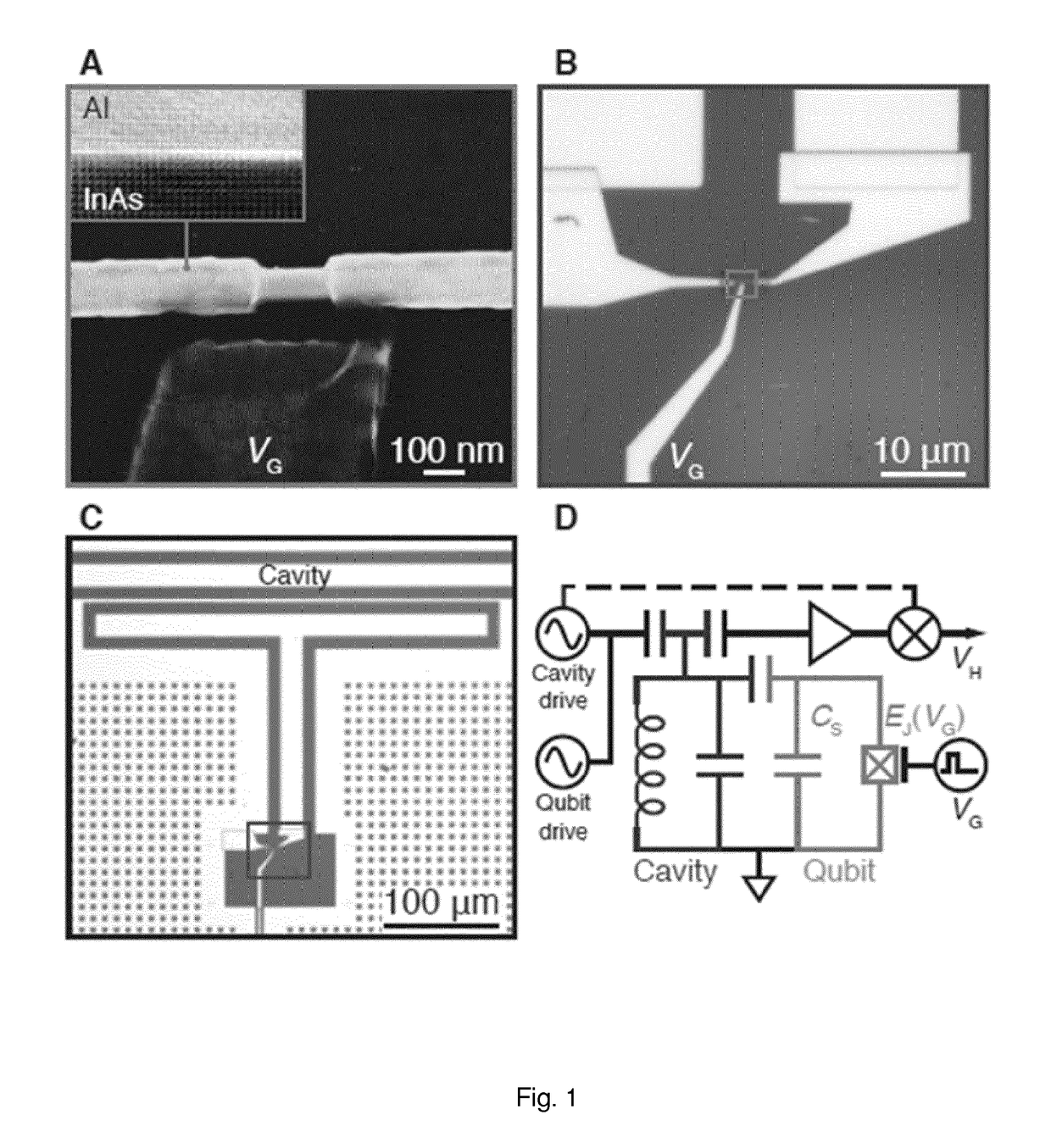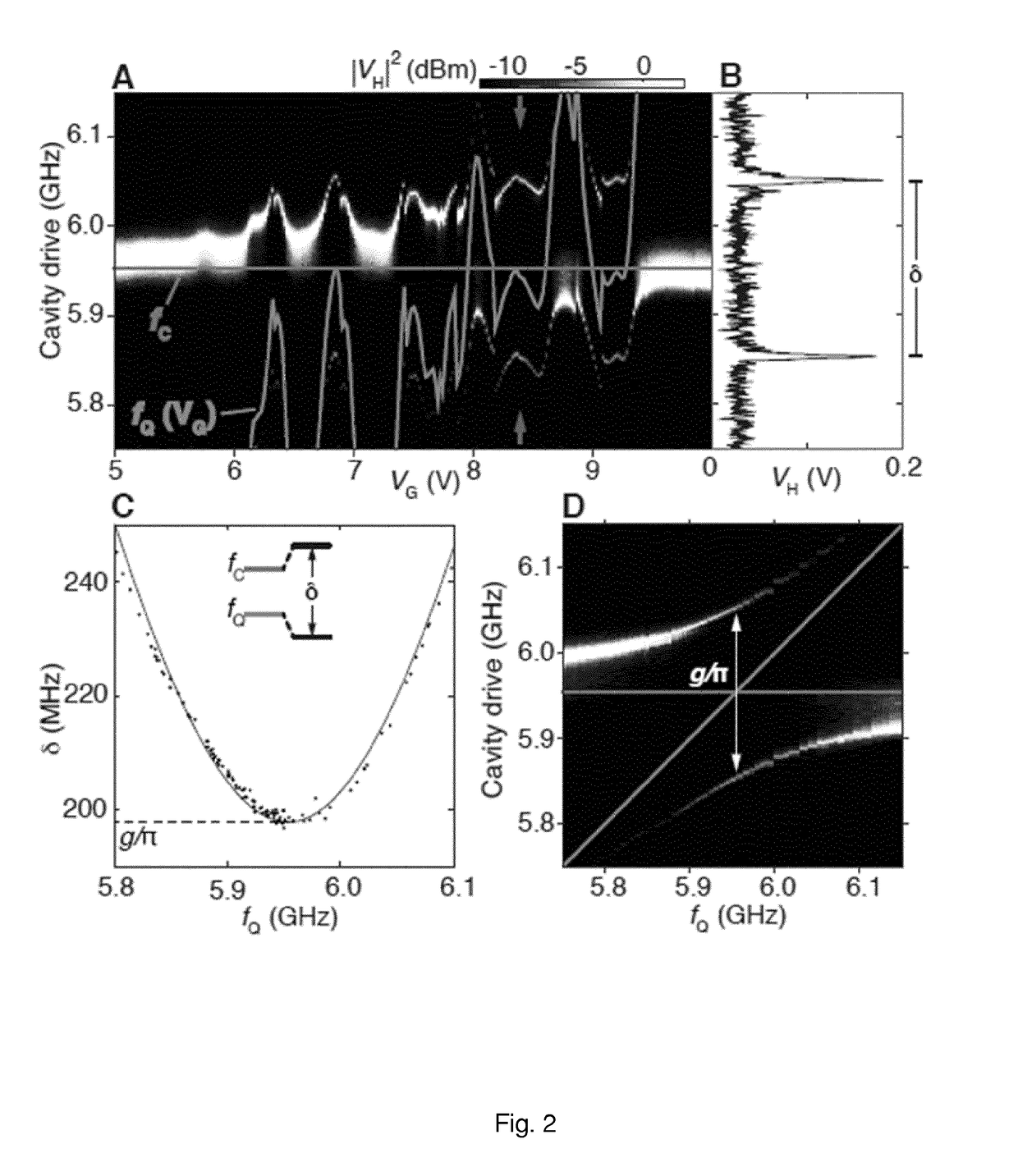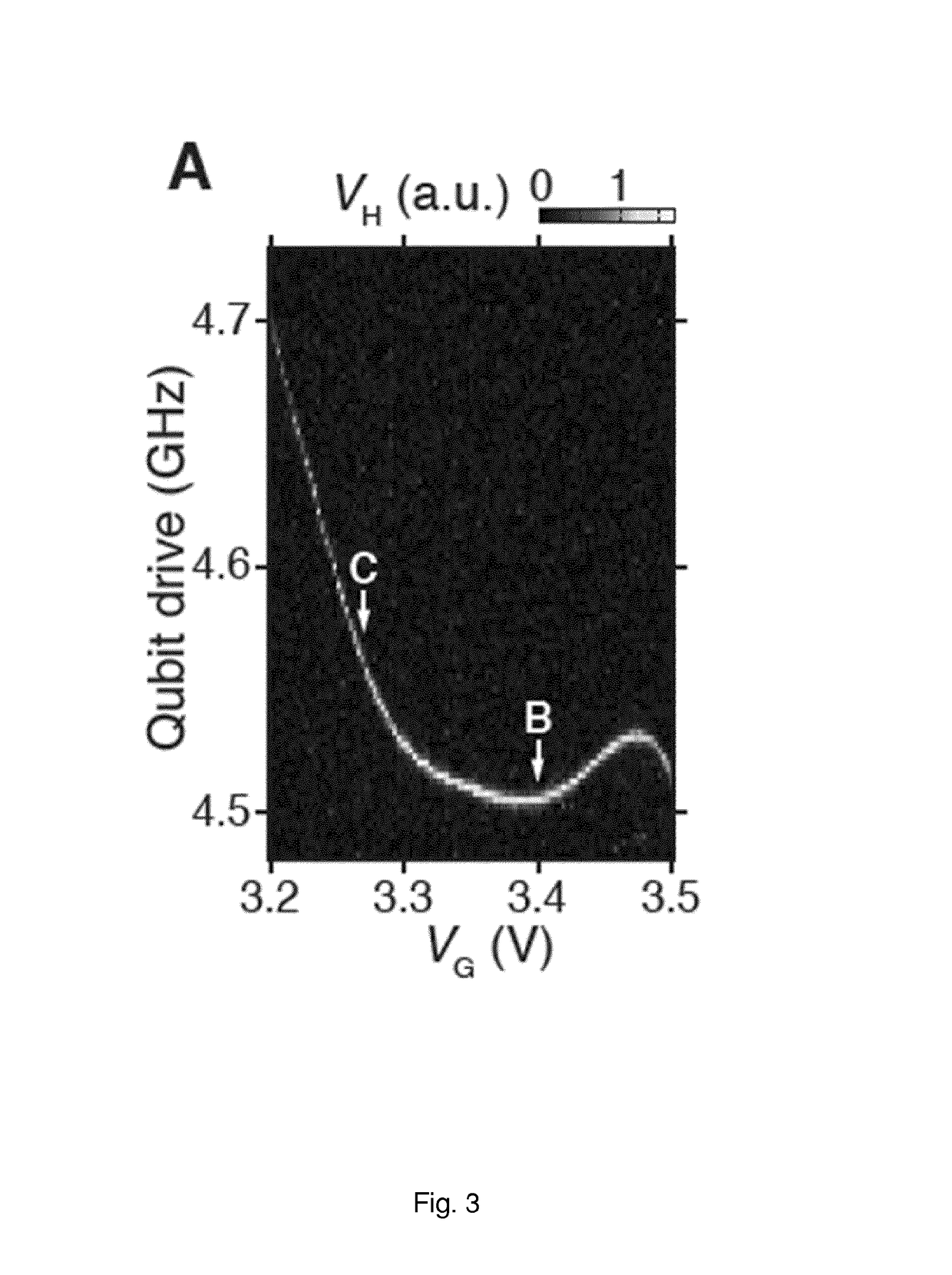Semiconductor josephson junction and a transmon qubit related thereto
a transmon qubit and magnetic field technology, applied in the field of quantum computing, can solve the problems of introducing sensitivity to charge noise, complex management of magnetic field for interacting qubits, and inconvenient placement of magnets in close proximity of one or more qubits
- Summary
- Abstract
- Description
- Claims
- Application Information
AI Technical Summary
Benefits of technology
Problems solved by technology
Method used
Image
Examples
example 1
A Side Gate Controlled Transmon Qubit
[0101]FIG. 1(A) shows a scanning electron micrograph of hybrid nanostructure in the form of an InAs—Al nanowire with a semiconductor weak link where the Al has been removed forming a Josephson junction. The weak link is formed by wet-etching a segment (˜180 nm) of the epitaxial Al shell. The inset shows a transmission electron micrograph of the epitaxial InAs / Al interface. The epitaxial interface between the superconducting Al the semiconductor InAs is leading to a proximity induced gap in the InAs core with a low density of states below the superconducting gap (a hard gap). The InAs nanowire is formed by MBE growth and is approximately 75 nm in diameter, with an in situ grown ˜30 nm thick Al shell.
[0102]FIG. 1(B-C) show optical micrographs of the completed tunable Josephson junction device according to the present disclosure. The total capacitance of the tunable Josephson junction, i.e. of the side gate controlled transmon qubit, CT, is determin...
example 2
Strong Coupling to a Side Gate Controlled Transmon Qubit
[0104]Side gate controlled transmon cavity coupling is investigated by measuring cavity transmission at low drive power as a function of the cavity drive frequency and gate voltage, VG, with fQ˜fC (FIG. 2(A)). The solid blue line shows the bare cavity resonance frequency, fC, while the solid green line indicates the gate-voltage dependent qubit frequency, fQ(VG), extracted from the data.
[0105]FIG. 2(B) shows cavity transmission as a function of the cavity drive at the position indicated by the purple arrows in (A). Aperiodic fluctuations in the resonance as a function of VG, with regions of widely split transmission peaks, has been observed (FIG. 2B). These gate-dependent, repeatable fluctuations in the cavity resonance are associated with mesoscopic fluctuations in the nanowire transmission appearing also as fluctuations of normal-state conductance, GN(VG) which causes fluctuations in the side gate controlled transmon frequenc...
example 3
Coherent Control of a Side Gate Controlled Transmon Qubit
[0108]FIG. 3(A) shows the qubit resonance frequency as a function of gate voltage, VG, and is observed as a distinct feature. Demonstrations of qubit control has been performed in the dispersive regime, fQ−fC>>g / 2π. fQ is obtained by measuring the qubit-state dependent cavity response following a second 2 μs microwave tone. When the qubit drive was on resonance with fQ, a peak in the cavity response was observed, yielding a reproducible gate voltage dependence.
[0109]FIG. 4(B) shows coherent Rabi oscillations performed at point B in (A) (VG=3.4 V) by applying microwave pulse for time, τ, to drive the qubit followed by a readout microwave pulse to probe the cavity response. The main panel shows coherent qubit oscillations as a function of driving frequency and r. The lower panel shows coherent oscillations at the qubit resonant frequency, corresponding to rotations about the X-axis of the Bloch sphere.
[0110]FIG. 4(C) shows coher...
PUM
| Property | Measurement | Unit |
|---|---|---|
| thickness | aaaaa | aaaaa |
| thickness | aaaaa | aaaaa |
| thickness | aaaaa | aaaaa |
Abstract
Description
Claims
Application Information
 Login to View More
Login to View More - R&D
- Intellectual Property
- Life Sciences
- Materials
- Tech Scout
- Unparalleled Data Quality
- Higher Quality Content
- 60% Fewer Hallucinations
Browse by: Latest US Patents, China's latest patents, Technical Efficacy Thesaurus, Application Domain, Technology Topic, Popular Technical Reports.
© 2025 PatSnap. All rights reserved.Legal|Privacy policy|Modern Slavery Act Transparency Statement|Sitemap|About US| Contact US: help@patsnap.com



